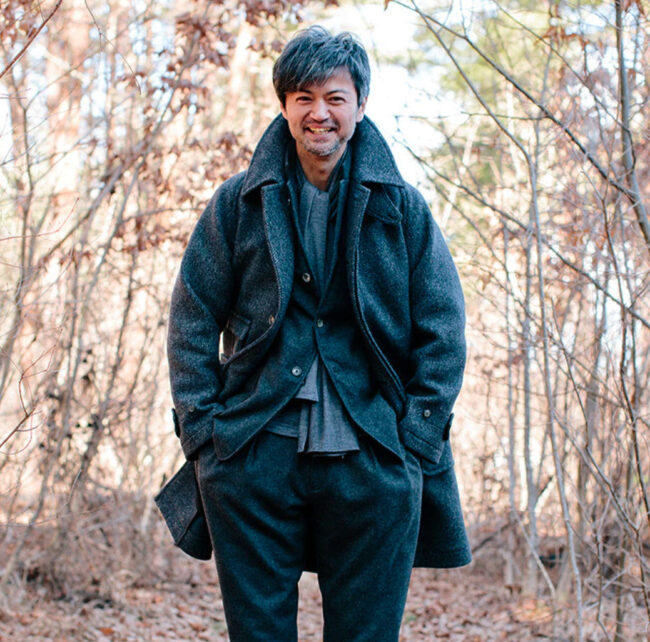
No Man Walks Alone is an advertiser on this site, but also one of my favorite online shops. I’ve always felt that guys can build an excellent wardrobe if they simply set aside some money to shop here every season. The store carries everything from classic Italian tailoring to Japanese workwear to even some avant-garde. And from now until Sunday night, you can take 20% off all full-priced items with the checkout code FALL20. Note, since No Man Walks Alone is an East Coast retailer, this promotion runs until 12 midnight Eastern Time. Some things that I think are particularly worth checking out:
Kaptain Sunshine Traveler Coat
If I had a reduce my outerwear wardrobe to just three staple pieces, I’d keep my Lee 101-J, Margiela five-zip, and Kaptain Sunshine Traveler. Actually, I have two Travelers. I bought one in navy Melton wool a few years ago, and found that I wear it so much, I purchased a lighter version for autumn (the Melton can only be worn in the wintertime). For me, this is the Ultimate Long Coat (ULC). It’s the one piece you can always grab from your wardrobe and feel confident about how you look. The coat’s power is all in its cut. Kaptain Sunshine’s Traveler is roomy and voluminous, comes down to your knees, and has an A-line silhouette. When worn, it covers almost your entire body, effectively making it your whole outfit. I wear it with everything from chunky Inis Meain sweaters and tailored trousers to stained J. Crew sweatshirts and repaired RRL work pants. It’s literally impossible to look bad in this thing. No one can do it, not even me.
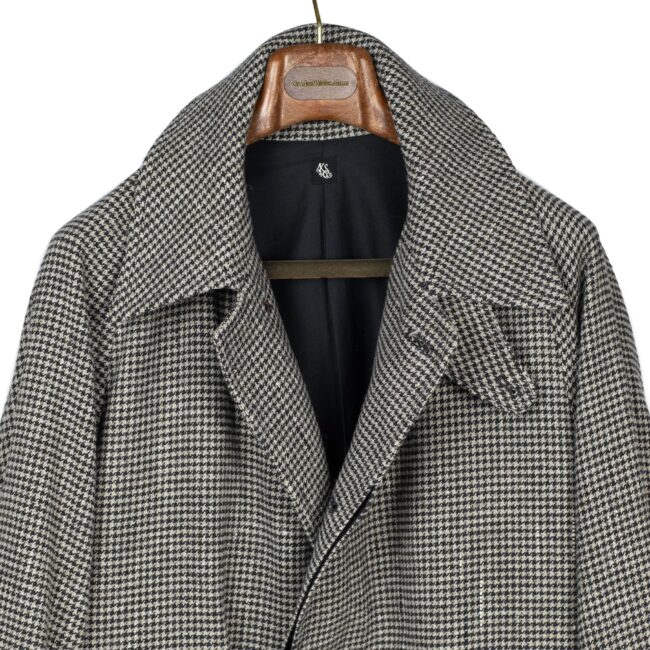
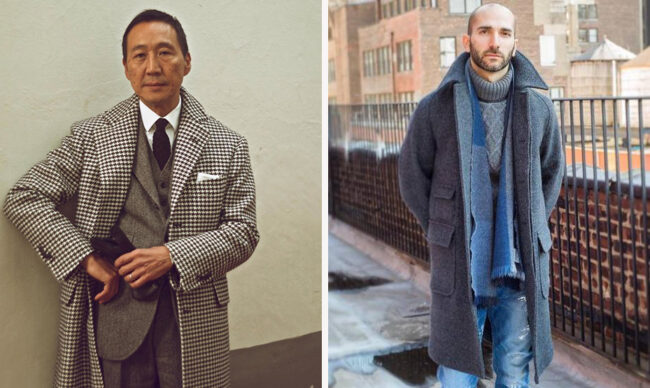
The Traveler is a perennial in Kaptain Sunshine’s collections and comes back every fall/winter season in various materials: lightweight wools, heavy Meltons, and sometimes even cotton. No Man Walks Alone currently has one in an exclusive wool-linen-silk blend. The lighter fabric will allow you to wear this comfortably in the fall and spring months, and the pattern will add visual interest to sedate outfits. Pictured above is Yasuto Kamoshita in a houndstooth coat (likely from his own label), and Kyle Toman in a previous season’s Traveler made from a different material. The two photos together should give you ideas on how this version will look worn.
A note about these lighter Travelers. The Melton version has a big, structured collar that looks great when popped from the back (as you can see on Kyle). The lighter versions are made in the same cut, but since the wool is lighter and softer, the collar ends up being a bit floppy. I prefer to wear mine with the collar popped from the back, so I gave my coat to a tailor and had him insert a heavier, stiffer interlining into the collar. The alteration was pretty easy and only cost me about $75. With the stiffer interlining in there, the collar will stand up better in the back, while the collar points will handsomely flop down, giving you a flattering face-framing effect.
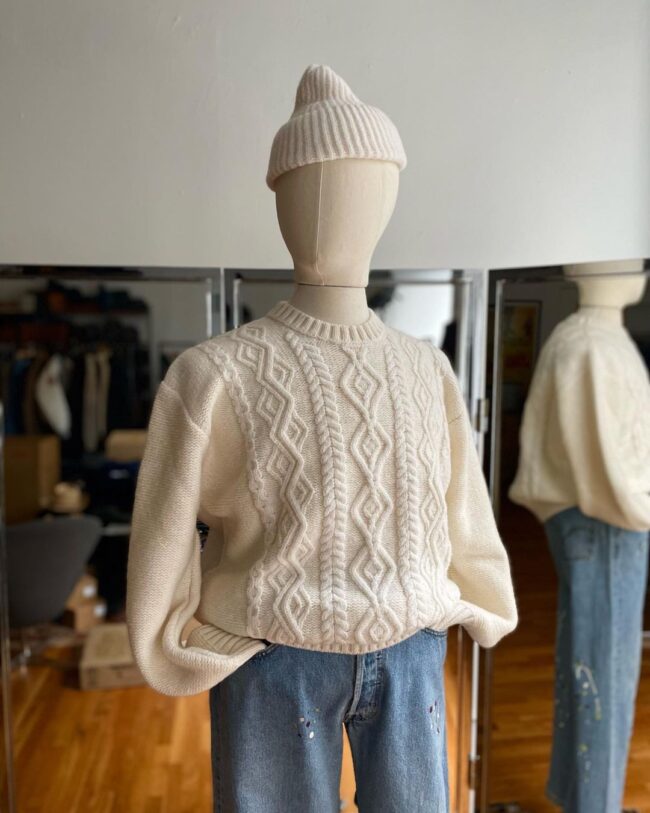
Inis Meáin Aran Sweaters
When it comes to menswear history, it’s hard to separate truth from fiction. The two are often intertwined in marketing pamphlets and vanity books, and the stories persist because they help sell clothes. For Arans, it’s often said that the intricately knitted patterns used to be associated with specific home ports or families, which allowed people to identify the poor, dead bodies of drowned fishermen who had been lost at sea or washed ashore. I’ve never seen any first-hand records of anyone being identified in such a way, and have long suspected the lore comes from J.M. Synge’s 1904 play Riders to the Sea, in which a girl identifies the body of her dead brother by his plain stockings.
What is true, however, is that governments in this region have made a concerted effort to boost their economy by supporting domestic industries. That includes supporting companies that sell Aran sweaters to eager tourists looking to take home a souvenir. Most Aran sweaters on the market are lovely, but also mass-manufactured and not particularly remarkable in terms of craft or construction. The exception is Inis Meáin. The company is named after Inis Meáin (or Inishmaan, as it’s known in English), the middle isle of the three Aran Islands and where the company is based. Instead of selling middling sweaters to tourists, they make luxurious versions of traditional knits and sell them to upscale boutiques overseas.
I love all of Inis Meáin’s knitwear, but if you have to splurge on just one, make it the cream-colored Aran. This is the sort of thing you can wear with jeans or tailored trousers, topcoats or waxed cotton Barbours. Since the cabling goes from front to back, it will also look great when worn on its own. Inis Meain’s sweaters are incredibly soft and plush, finished with hand-linked seams, and surprisingly hefty. I bought my first one a little over ten years ago, and it looks almost the same as the day I received it.
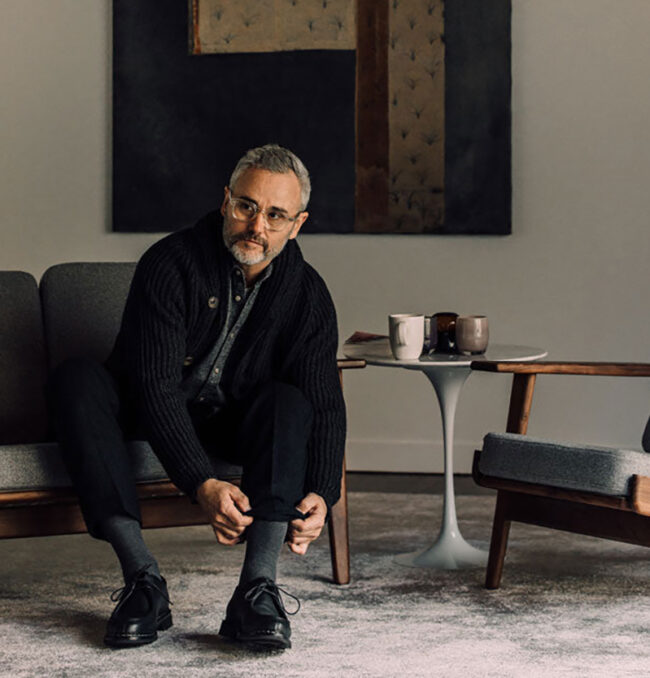

Scott & Charters Shawl Collar Cardigans
Along with his lessons on how we can become better people, Fred Rogers taught us something about clothing. Each of his “Mr. Rogers’ Neighborhood” episodes started the same way: he’d come home from some unseen outside world, hang his sport coat up in a closet, and then reach for one of his trademark cardigans. The message was subtle, but there: changing into simple, comfortable clothes can be a way to hit the refresh button. By trading stiffer jackets for softer knitwear, we shrug off the day’s stress.
One of my favorite things to wear at home is a chunky shawl collar cardigan from Scott & Charters (the company is now owned by Begg). Compared to William Lockie, the other great Scottish maker for this style, Scott & Charters’s shawl collar cardigans are thicker, have an elongated silhouette, and feature a collar that hangs like a thick roll of dough. No Man Walks Alone has these in staple colors—navy, brown, and grey—and unique Donegal yarns. If you can stomach the price, I highly recommend the cashmere versions. I bought one for my father last Christmas. Before packing it up, I put it on, just to see. I don’t think I’ve ever put on anything more sumptuous or indulgent. The material is plush beyond comparison and makes you feel like a baby wrapped in a blanket.

Wythe Flannels
I love everything from Wythe this season, including the hand-tooled belts and washed Shetland sweaters. But if I have to choose one thing to highlight, it would be their pearl-snap flannels. Wythe founder Peter Middleton got his start by developing luxury fabrics for Ralph Lauren, and he has since carried the ethos that all of his fabrics should be custom-designed and -woven (not just selected from a book). This new season’s collection is inspired by American-made flannel shirts from the 1920s to the 1960s, which Middleton acquired through vintage stores and private collectors. The shirts feature charming Western plaid designs and cream pearl snaps made to look like the aged enamels found on 1950s flannels. Wear these with Wrangler Wranchers, raw denim jeans, suede trucker jackets, military surplus jackets, and heavy work boots or side-zips.
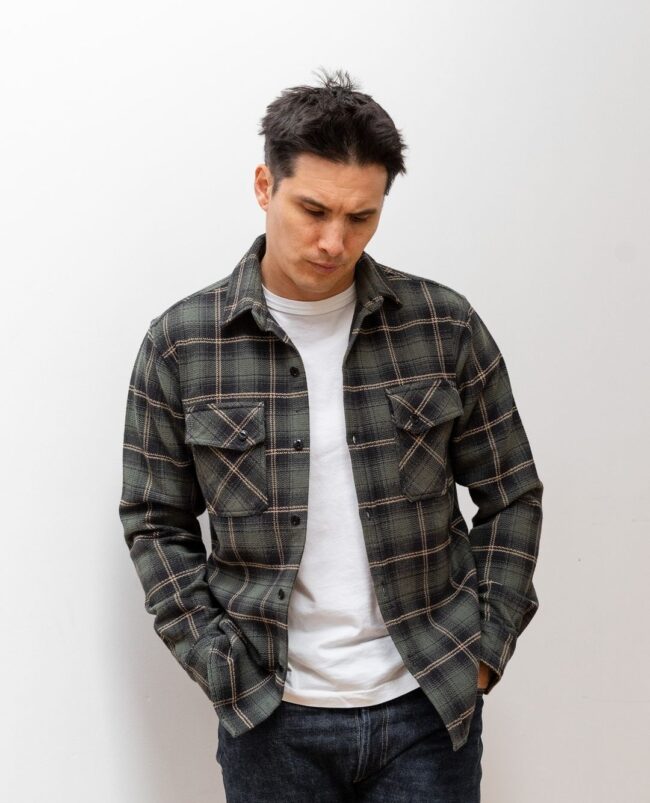
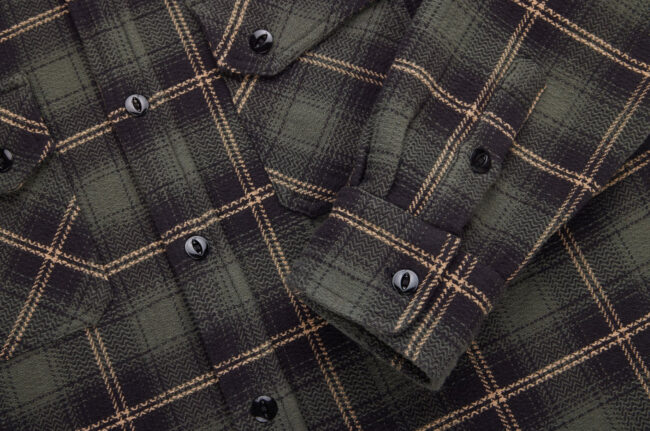
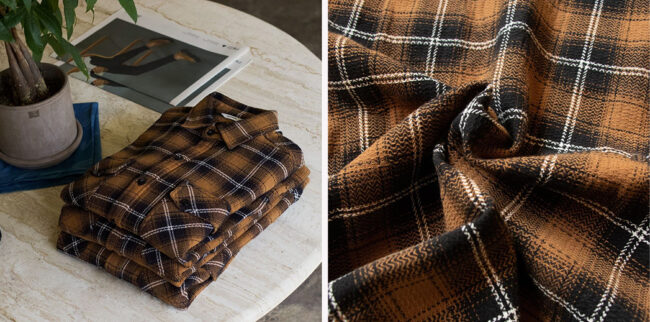
3sixteen Crosscut Flannels
The crosscut flannel is a fall/winter staple for 3sixteen. I’ve always liked the style, but the pine check this season might be the best iteration to date. The fabric was custom-woven in India, with the face side being highly textured and coarse, and the interior being double-brushed for softness. The enamel-coated metal buttons were also made to patina and chip over time. I prefer the pine green version because it will go with jeans of any color—blue, black, tan, and so on. However, if you know you’ll never wear it with tan pants, the gold version will look even better against black or blue denim.
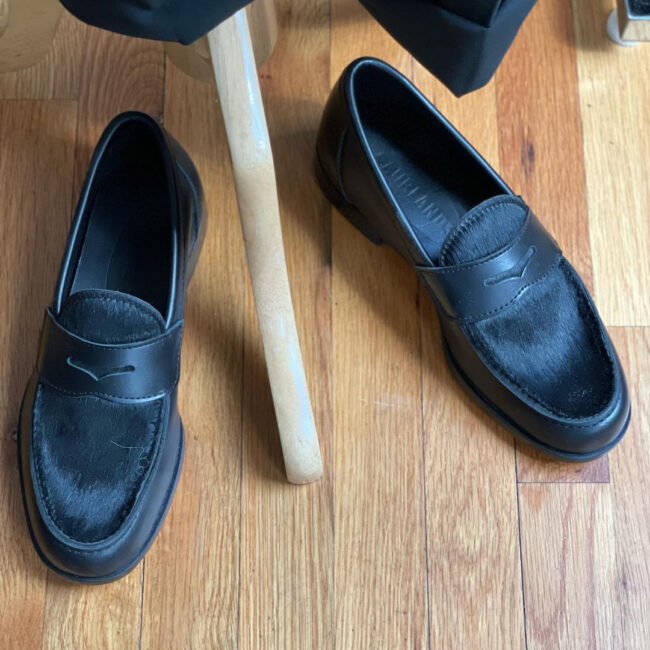
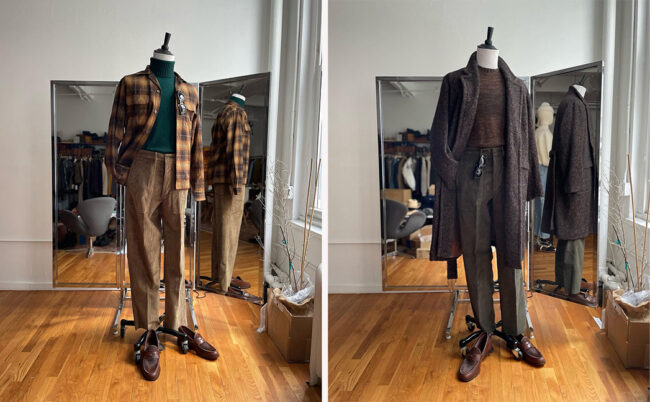
Aurland Loafers
The penny loafer was the sine qua non of the post-war Ivy look, and today it goes just as well with tailoring as it does with denim. But despite being a very American shoe, it shares some historical relation to Norway. As the story goes, shoemaker Nils Gregoriusson Tveranger came to the United States as a young man to learn his trade and became inspired by the comfort of Native American moccasins. He then took what he learned back to Aurland and invented the Aurland moccasin (later renamed the Aurland shoe), which was worn by Norweigan fishermen and farmers. When GH Bass imported that style back to the United States, he named his model the Weejun—a corruption of the word Norwegian, a nod to Tveranger’s work.
I don’t know if the modern Aurland loafer has remained unchanged since it was introduced nearly a hundred years ago. However, as the oldest-operating workshop for handcrafted shoes in Norway, and at least one of the origin stories for the penny loafer, it’s a pretty cool shoe. No Man Walks Alone carries the upgraded version: Blake-stitched and unlined, which will make them feel more comfortable out-the-box (the cheaper versions you can find online are often the lower-grade glued versions). I think they’re their safest in oak brown, possibly even black. But recently, I’ve been considering the hair-on-hide versions. They’re funky in a good way, and whoever styles No Man Walks Alone’s mannequins (likely Willy) has been doing an excellent job of giving outfit inspiration. Check out how good they look above with mostly tonal outfits involving textured wools, flannel shirts, turtlenecks, and knee-length coats.
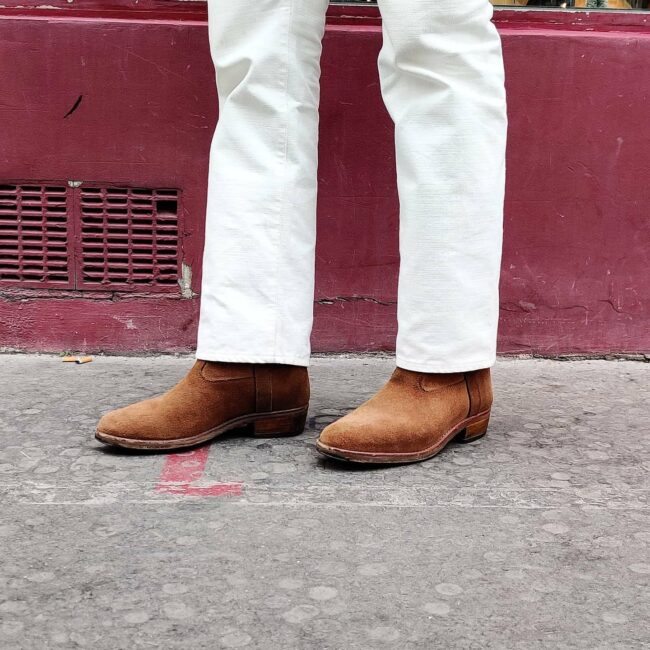
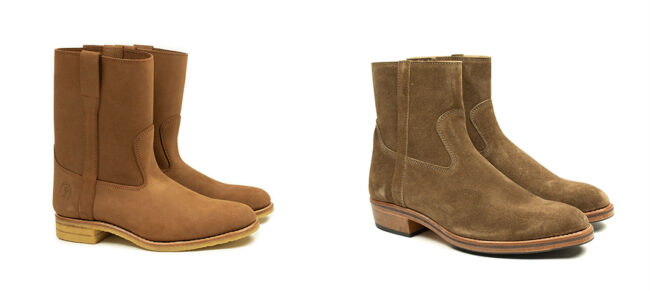
La Botte Gardiane Boots
In the Camargue region of southern France, a gardian is a mounted cattle herder. Their work is similar to that of the Mexican charro, the North American cowboy, the Tuscan buttero, or the Portuguese campino. La Botte Gardiane, then, is simply named after what they do: supply boots to French cowboys. Historically, these boots were made with reverse suede, so that the smooth side made it easier for a cowboy to insert his foot, while the rough exterior was naturally resistant to scratches from thick brush or knocks from bulls. Of course, the company has evolved and expanded. What started as a five-person team in 1959 has grown into a company with 18 employees and styles for country and city life. Not all of the styles are meant for actual bull herding, but they stand up to the rigors of getting coffee and boarding subway cars, and they pair well with the sort of workwear and denim that many of us wear.
Recently, the company has received a co-sign from several notable fashion brands. Their boots have shown up on the runways of Lemaire and Celine. De Bonne Facture often uses them in their lookbooks (and has sold some exclusive versions). No Man Walks Alone also carries them this season, including the popular side-zip and pull-up roper models. I like them because they straddle the line between ruggedness and elegance. It’s workwear—but somehow chic.

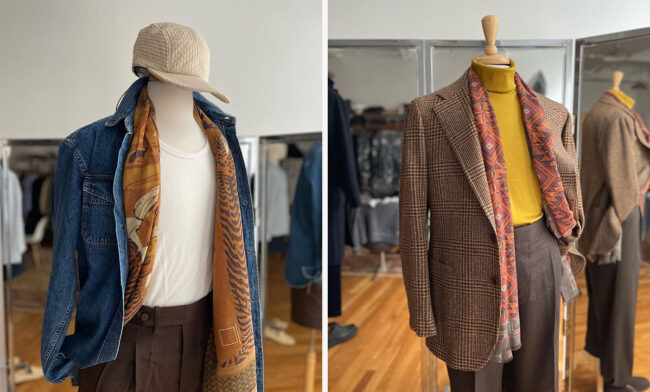
X of Pentacles Scarves
I love that Marcel Ames, founder of the menswear accessory label X of Pentacles, isn’t just re-releasing the same archival patterns people have mined forever. Instead, he actually designs. Each motif is inspired by some world culture. The Khatt scarves feature intertwining, flowing lines typical of Arabic or Moorish decorations, while the First American scarves pay homage to richly woven Native American tapestries in the American southwest. Ames then does the hard work of sketching, painting, and digitizing his art, so they’re ready for print in Italy. “I’ve always been fascinated with Arabic calligraphic art and architecture,” Ames says of his Khatt design. “Traditional script is made with a bamboo reed and India ink. I used a similar method to create a tessellation of patterns—like a mosaic—but subbed out the bamboo reed for balsa wood. The result is like having a piece of Morocco around your neck.”
On No Man Walks Alone’s Instagram, you can see how these scarves lend something special to outfits. The “Nouveau Nights” scarf in ochre wool and silk looks excellent next to blue denim; the “First American” scarf in brown and brick complements the earth tones in tweed. I’m usually a fan of playing it safe with accessories, but here, I would go for the more unusual designs in sienna, ochre, and stone gray.
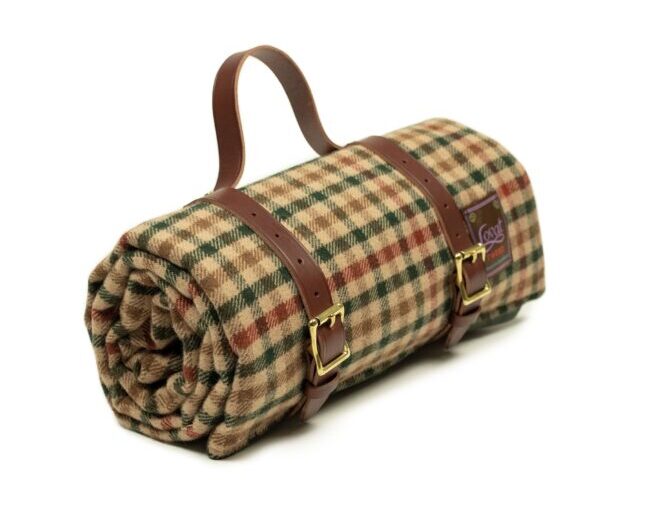
Lovat Mills Picnic Blankets
When Tyler the Creator said, “you always keep the picnic blankets in the back cause you never know where you’re gonna end up at,” I felt that. Picnics are the easiest way to feel fancy. Pack some beautifully made salads, diced fruits, a bottle of prosecco, a few plastic wine glasses, and these Caspari paper plates. Wear a nice little outfit. And protect your outfit by bringing along a Lovat Mills tweed picnic blanket to lay out over some sprawling grass.
Clients of bespoke tailors will know Lovat for their tweeds. This Scottish mill supplies some of the best jacketings in the world (many of The London Lounge’s Cloth Club tweeds are woven here). They make everything from spongey Shetlands to woven cashmere to tough gamekeeper tweeds rendered in rich colors. The mill is full of heritage and manufacturing expertise, and the company’s picnic blankets are part of its selection of home goods. I love how these are waxed on the backside for waterproofing, and the blanket comes with a stylish bridle leather strap for easy storage and transport. These would make for a perfect Christmas gift, especially to someone you think will invite you to a picnic.
